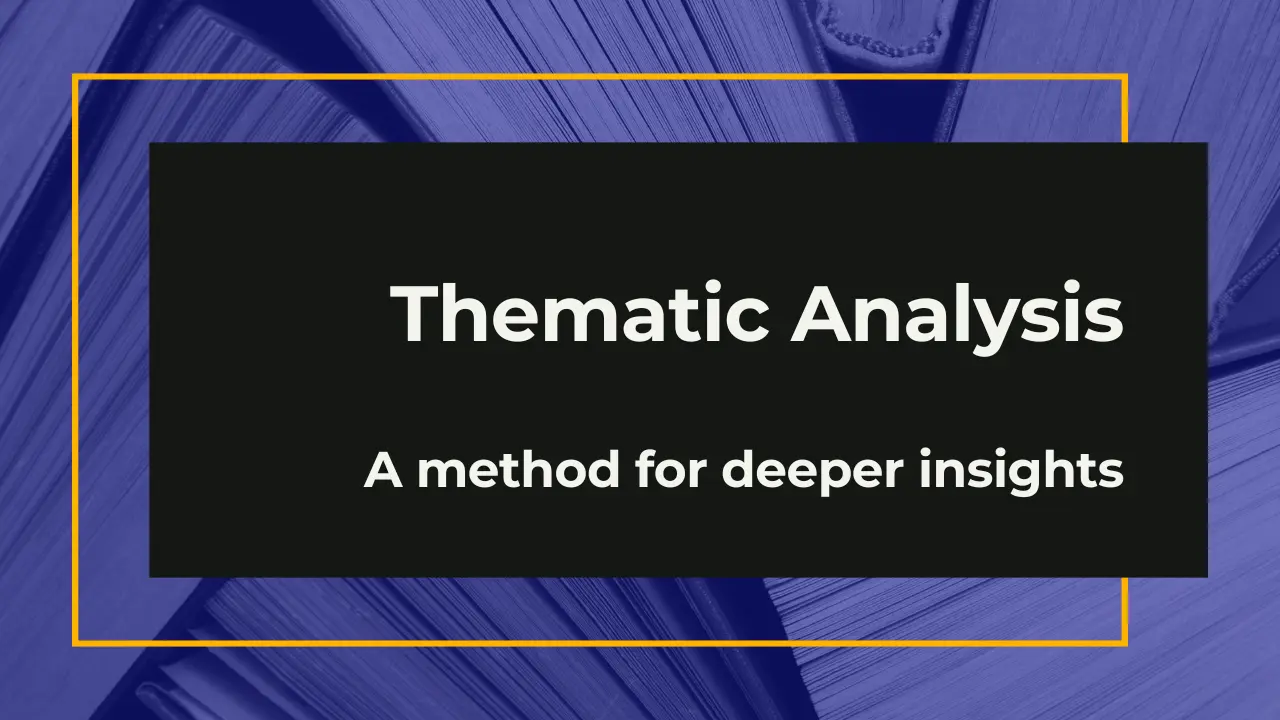Thematic analysis is a powerful tool in qualitative research, providing a structured way to uncover patterns and themes within data. Whether you’re new to qualitative methods or looking to refine your analysis skills, this guide will walk you through the essentials of thematic analysis, offering practical insights and tips to make your research process smoother and more insightful.
What Exactly Is Thematic Analysis?
At its core, thematic analysis is a method used to identify, analyze, and report patterns or themes within data. It’s like being a detective, sifting through clues to uncover a story or trend that isn’t immediately obvious. This approach helps researchers understand deeper meanings and connections within qualitative data, such as interview transcripts or open-ended survey responses.
Imagine you’re trying to figure out what makes a great pizza. You gather feedback from a bunch of pizza lovers. Thematic analysis would help you sort through all that feedback to identify common themes like “cheese quality,” “crust texture,” or “toppings variety.” These themes provide a clearer picture of what people value in their pizza experience.
Basic Terminology Relating to Thematic Analysis
To make sense of thematic analysis, it’s helpful to get familiar with some basic terms:
- Theme: A recurring topic or pattern found in the data.
- Code: A label or tag assigned to specific segments of data that relate to a theme.
- Pattern: A repeated, significant element that reveals insight into the data.
- Data Saturation: The point at which no new themes or patterns emerge from the data.
These terms are the building blocks of thematic analysis, helping you structure and interpret your findings effectively.
When to Use Thematic Analysis
So, when should you reach for thematic analysis? This method is particularly useful when you’re dealing with:
- Rich, Qualitative Data: When you have detailed data from interviews, focus groups, or open-ended surveys.
- Exploratory Research: If you’re exploring a new topic or area where existing theories or concepts might not fully apply.
- Understanding Perceptions: When you want to grasp how people think, feel, or experience something in their own words.
In essence, thematic analysis shines when you want to dig deep into qualitative data and uncover nuanced insights.
The Main Approaches to Thematic Analysis
There are several approaches to thematic analysis, each offering a slightly different perspective on the data:
- Inductive Thematic Analysis: This approach is data-driven, focusing on themes that emerge naturally from the data without predefined expectations. It’s like letting the data speak for itself.
- Deductive Thematic Analysis: Here, you start with predefined themes or theories and then test these against the data. It’s a bit like using a map to guide your exploration.
- Reflexive Thematic Analysis: This approach emphasizes the researcher’s role in shaping the analysis, acknowledge that your perspective influences how themes are identifiy. It’s about being aware of your own biases and assumptions.
Each approach has its strengths and can be chosen base on your research objectives and the nature of your data.

The Three Types of Thematic Analysis
Thematic analysis can be categorized into three types:
- Semantic Thematic Analysis: Focuses on the explicit meanings and direct content of the data. It’s about what is said rather than the underlying meanings.
- Latent Thematic Analysis: Goes beyond the surface to explore underlying meanings and patterns within the data. It’s about understanding the “why” behind what’s said.
- Constructivist Thematic Analysis: Emphasizes the subjective nature of data and the co-construction of meaning between researcher and participants. It’s about how meaning is create through interaction.
Choosing the right type depends on the depth of analysis you aim to achieve.
How to “Do” Thematic Analysis: The Process
Getting started with thematic analysis involves a series of steps that guide you from raw data to meaningful insights:
- Familiarize Yourself with the Data: Read through your data several times to get a sense of its content and context.
- Generate Initial Codes: Break down the data into manageable pieces and assign codes that represent key concepts or ideas.
- Search for Themes: Group similar codes together to identify broader themes that capture the essence of your data.
- Review Themes: Check if your themes accurately reflect the data and refine them as needed.
- Define and Name Themes: Clearly define what each theme represents and give them descriptive names.
- Write Up Your Findings: Present your themes and support them with quotes or examples from the data.
This process helps you systematically explore and interpret your qualitative data, ensuring a thorough and rigorous analysis.
Tips and Suggestions for Effective Thematic Analysis
- Stay Organized: Use tools like spreadsheets or qualitative data analysis software to keep track of your codes and themes.
- Be Flexible: Be open to adjusting your themes as new insights emerge.
- Engage with the Data: Spend time immersing yourself in the data to ensure a deep understanding.
- Seek Feedback: Discuss your findings with colleagues or mentors to gain different perspectives.
By following these tips, you can enhance the quality and reliability of your thematic analysis.
Read More: 60 Innovative AI Startups to Watch in September 2024
Conclusion
Thematic analysis’s is a versatile and insightful method for exploring qualitative data. By identifying and interpreting themes, you can uncover deeper meanings and patterns that provide valuable insights into your research topic. Whether you’re new to qualitative research or looking to refine your skills, mastering thematic analysis’s can significantly enhance your ability to analyze and understand complex data.
With practice and attention to detail, thematic analysis’s can become a powerful tool in your research toolkit, helping you draw meaningful conclusions from your data and contributing to a richer understanding of the topics you study.







